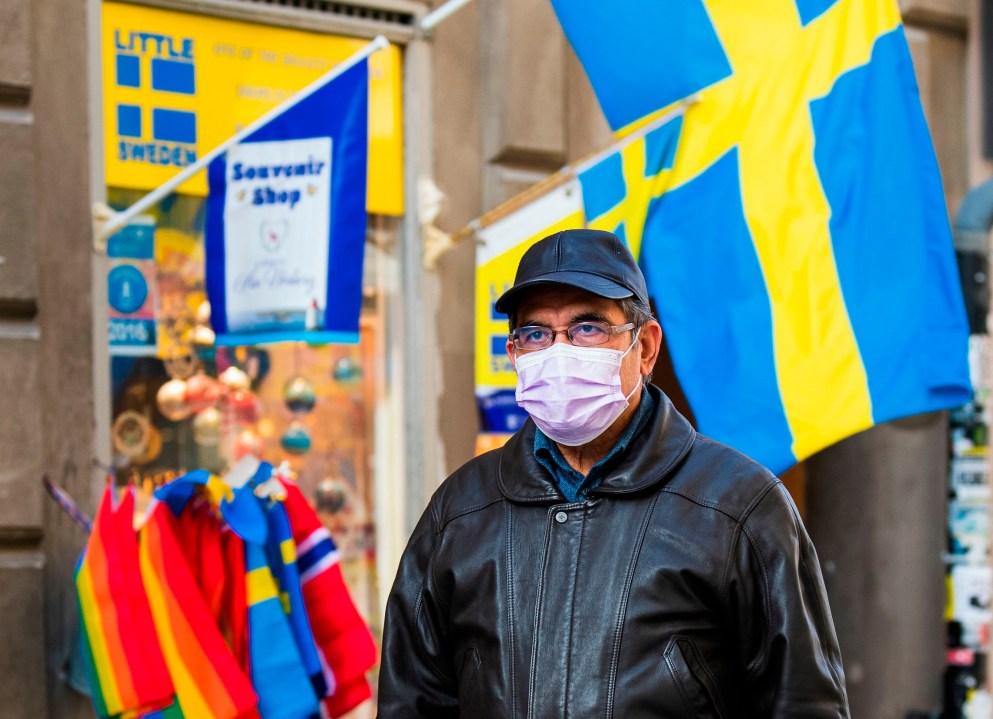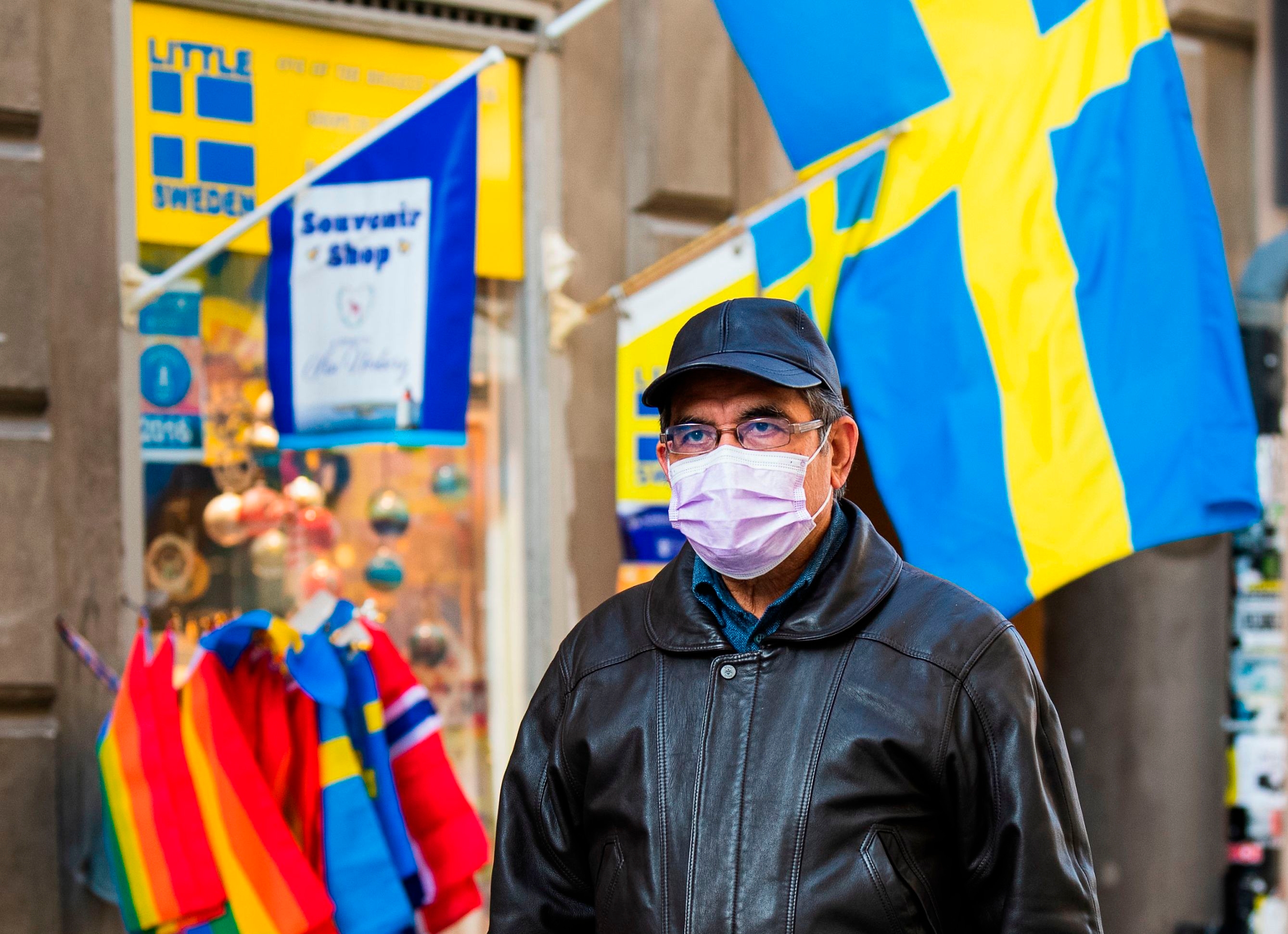Two weeks ago, I wrote about ‘the Swedish experiment’ in The Spectator. As the world went into lockdown, Sweden opted for a different approach to tackling coronavirus: cities, schools and restaurants have remained open. This was judged by critics to be utterly foolish: it would allow the virus to spread much faster than elsewhere, we were told, leading to tens of thousands of deaths. Hospitals would become like warzones. As Sweden was two weeks behind the UK on the epidemic curve, most British experts said we’d pay the price for our approach when we were at the peak. Come back in two weeks, I was told. Let’s see what you’re saying then. So here I am.
I’m happy to say that those fears haven’t materialised. But the pressure on Sweden to change tack hasn’t gone away. We haven’t u-turned. We’re careful, staying inside a lot more. But schools and shops remain open. Unlike some countries on the continent, no one is asking for ‘our papers’ when we move around in cities. The police don’t stop us and ask why we are spending so much time outdoors: authorities rather encourage it. No one is prying in shopping baskets to make sure you only buy essentials.
The country’s Public Health Agency and the ‘state epidemiologist’, Anders Tegnell, have kept their cool and still don’t recommend a lockdown. They are getting criticised by scientific modellers but the agency is sticking to its own model of how the virus is expected to develop and what pressure hospitals will be under. The government still heeds the agency’s advice; no party in the opposition argues for a lockdown. Rather, opinion polls show that Swedes remain strongly in favour of the country’s liberal approach to the pandemic.
So why isn’t Sweden changing tack in the fight against the pandemic? ‘The evil that is in the world always comes of ignorance’, wrote Albert Camus in The Plague – a book that eerily depicts the suffering of the human condition when a disease sweeps through society. And lately, scientists and observers have ventured that explanation publicly: perhaps Sweden’s refusal to fall into line is because Tegnell and his team are a bunch of philistines?
A group of 22 scientists made that charge in an op-ed last week in Dagens Nyheter, appealing to the government to rein in supposedly ignorant officials at the Public Health Agency. Last week, a piece in the Daily Telegraph ran with the same theme and expanded it to include much of the national population: Swedes have willingly been duped by ignorant authorities and a chief epidemiologist who has been seduced by his own sudden fame. Our faith in government is so big, and our bandwidth for dissent is so small, that we even scold criticism of the government as ‘shameful betrayal of the national effort’. A journalist from French television that I talked to on Sunday admitted, somewhat sheepishly, that ‘it’s almost as if we want Sweden to fail because then we would know it is you and not us that there is something wrong with’.
Personal spending in Denmark and Finland is down 66 per cent and 70 per cent respectively – compared to 30 per cent in Sweden
There is a simpler explanation: Sweden is sticking to its policy because, on the whole, it is balanced and effectual. So far, the actual development is generally following the government’s prediction. On Monday, 1,580 people had died and tested positive for Covid-19. The number of daily deaths has remained pretty stable at about 75 for a while but is now on a declining path. A lot more people will die in the next weeks and months but our death toll is far away from the pessimistic and alarmist predictions suggesting 80 to 90,000 people would die before the summer.
There are also encouraging signs that the growth of reported infections is also slowing down – a development that holds for both Stockholm (by far the worst affected region) and the rest of the country. The estimate from the Public Health Agency is that 100,000 people will show up at a hospital and test positive for Covid-19: the current headcount, just south of 14,800, suggests we are broadly in line with that estimate – if not below it.
Perhaps more important is the situation at our hospitals and their intensive care wards. The main ambition of suppression policies, after all, has been to avoid hospitals getting overwhelmed by patients they cannot treat because of shortages of staff, equipment and intensive care beds. Modellers in Sweden that have followed an Imperial College type approach have suggested demand will peak at 8,000 to 9,000 patients in intensive care per day. But actual numbers are telling a very different story. Yes, the situation is stressful, but – mercifully – the growth in intensive care patients has slowed down remarkably and the number of patients currently in intensive care has flatlined.
We now have about 530 patients in intensive care in the country: our hospital capacity is twice as high at 1,100. Stockholm now averages about 220 critical care patients per day and its hospitals, far from being overwhelmed, have capacity for another 70. Stockholm also reports that it has several hundred inpatient care beds unoccupied and that people shouldn’t hesitate to seek hospital care if they feel sick. A new field ward has been set up in Stockholm for intensive and inpatient care and some predicted it would start getting patients two weeks ago. It hasn’t received any patients yet.
Sweden hasn’t declared ‘victory’ – far from it. It’s still early days in this pandemic and no one really knows yet how the virus will spread once restrictions are lifted and what excess mortality it will have caused when it’s all over. Sweden doesn’t know the size of its ‘iceberg’ – how many people that have had the virus with only mild or no symptoms. It will remain unclear for at least another couple of weeks if parts of Sweden (especially Stockholm) has developed some degree of herd immunity.
A recent test at Karolinska suggested that 11 per cent of people in Stockholm had developed antibodies against the virus. Professor Jan Albert, who has led these tests, says the rate is most likely higher – perhaps substantially higher. So far they have only tested a small sample of blood donors and they can only donate if they are healthy and free of symptoms. Albert thinks the actual situation isn’t far away from the ballpark suggested by professor Tom Britton in a study that was released this weekend: that between 25 and 40 per cent of the Stockholm population have had the virus and that the region will reach herd immunity in late May.
These results are hopeful, even if they are still informed estimates and not observed reality, and are open to dispute. Nor will they change Swedish policy anytime soon. In fact, all the uncertainties around the future of this pandemic are part of the motivation for Sweden opting for a liberal approach. We have to plan for strong social distancing measures to remain in place for a long time and they won’t work if they are harder than necessary.
Countries like Austria and Denmark are now beginning to ease their lockdown restrictions but the virus is still spreading in their countries, albeit at a slower rate than earlier. Once more of the restrictions have been lifted, they may soon have to be imposed again to control new outbreaks of the virus. No country in Europe has yet figured out how a policy of test, track and trace could be organized on a large scale. We don’t know when a vaccine will be ready. For the foreseeable future, the backbone of every country’s defence against the virus will have to be based on strong social distancing. Sweden’s authorities proposed a liberal approach based on individual responsibility because it can be tolerated for longer and it has the effect of ‘flattening the curve’.
There is also a broader case for it. Lockdown policies harm basic civil liberties: in Sweden these liberties are, with some exceptions, intact. Lockdown policies have huge consequences on public health. And they are profoundly damaging to the economy. Sweden is no exception: our economy has been falling like a stone in the past month. In the city where I live, Uppsala, bankruptcy notices are now put up on many shop windows and I hear every day about friends and acquaintances that have lost their jobs or their small firms. National production has also slipped because global trade has closed. Big industrial stalwarts like ABB and Sandvik are still producing but can’t ship their products to other countries. Carmakers like Volvo and Scania decided to close their factories at an early point in March because they couldn’t get parts and components from other countries.
So everyone was already set up for gloomy reading about the economic outlook when the government unveiled its new budget last week. Still, the experience was grim. In the main scenario, our national output will decline by 4 per cent this year, taking unemployment up to 9 per cent and the fiscal deficit to 3.8 per cent of the gross domestic product.
The only silver lining is that it could have been worse. We are pretty far away from the levels of economic decline predicted for most lockdown countries. In fact, the Swedish economic situation looks sensationally positive when compared to the ghastly reports and scenarios elsewhere. Cash turnover indicators, for instance, suggest that personal consumption in Denmark and Finland has dropped substantially more than in Sweden. Unemployment benefit claims in Norway have shot through the roof and grown four times as fast as in Sweden. Fiscal deficits in the UK and the US are likely to be in the region of 12 to 15 per cent. Last week’s economic scenario from the OBR suggested that Britain’s GDP could drop by almost 13 per cent this year.
So yes: the economy has to be factored into a balanced pandemic response if it is going to last for longer than a few weeks more. No country can sustain suppression policies if they have catastrophic consequences for the economy. Many countries can borrow cash now to pay people that aren’t working and help businesses that are on the verge of bankruptcy. But that isn’t an unlimited option. Debt accumulated now will have to be repaid later. We can hope for a sharp economic recovery but chances are that it will be slow and that it will take years to rebuild national production. And we already know what that means: unemployment will remain high, people will be poorer and there will be less spending on benefits, welfare services and core state functions like the police. Sweden won’t be spared, but our economy will not be as ravaged as elsewhere.
So Sweden isn’t edging closer to a lockdown. Nor is team Tegnell panicking and fighting for its reputation. The vast majority of people think Sweden broadly opted for a balanced and effectual policy and current trends support that view. Everyone is upset about carelessness in nursing homes – that a very high share of our death toll is elderly nursing home residents – and that emergency plans were so poor and medical contingency stocks so small. People will be held to account. Some heads will roll. My guess is that it won’t be Tegnell’s.
This article is free to read
To unlock more articles, subscribe to get 3 months of unlimited access for just $5








Comments
Join the debate for just $5 for 3 months
Be part of the conversation with other Spectator readers by getting your first three months for $5.
UNLOCK ACCESS Just $5 for 3 monthsAlready a subscriber? Log in